Indian Americans must remain politically engaged
For those of us who have been away from India for decades, Republic Day and Independence Day are among the few times that we gather to celebrate the great country of our birth
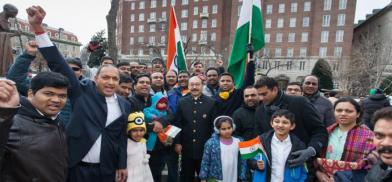
For those of us who have been away from India for decades, Republic Day and Independence Day are among the few times that we gather to celebrate the great country of our birth. Because of the devastating impact of COVID-19, this year’s Republic Day has been a sober affair everywhere, including in New Delhi, where usually, it is celebrated with great pomp and pageantry.
The one I remember most fondly happened six years ago. In 2015, I attended Republic Day in the Indian capital, as part of the US delegation accompanying President Barack Obama. It was the first and only time a US President attended a Republic Day event as the guest of honor.
As an Indian American, watching the ceremonial parade on Rajpath was a proud and humbling moment for me. As you know, the parade symbolizes the diversity and inclusivity of India, its splendid culture and rich history and heritage. It also showcases the remarkable progress the country has made in different fields over the decades, including its military power.
I have made many visits to India since coming to the United States roughly half a century ago. But no visit could top that trip in January 2015.
Today, on this 72nd Republic Day, I want to talk about other memories. They are Indian memories and American memories.
We all know that it was 71 years ago on January 26 that the Constitution of India was born. On that day India made its newly minted constitution the governing document of our motherland. The Constitution of India is an extraordinary document that captured the spirit of India and delineated the path forward for the nation.
The reason I want to talk about the Constitution of India in 2021 and take you all down memory lane is because of what’s been happening around the world lately, including in the United States and in India.
In recent years, we have seen many democratic nations drifting from the lofty ideals of their founding fathers; moving away from commitments generations of their leaders made to uphold democracy; and reversing progress made in areas such as civil rights, religious freedom, social justice and human rights.
Nowhere has this more apparent than in our own country, the United States. Five years ago, it would have been unthinkable for anyone to say that democracy would regress and be in danger in this nation which has long been a beacon of democracy and freedom around the globe.
That is why it is difficult now in 2021 to believe that, we have just emerged from such a dark and sad chapter in our history. The good news is that even though the country remains deeply divided politically, our democracy remains intact.
It is intact because our institutions are strong. And, because many leaders, both Republicans and Democrats, holding important positions at the federal, state and local level correctly understood the letter and spirit of the American constitution. They stood united to protect and defend that constitution.
Now, after witnessing a transfer of power that was far from peaceful, we have a greater appreciation for the US constitution.
India’s constitution is very similar to that of the United States. As Indian Americans, we have a unique perspective on the Indian constitution and understand those similarities better than others
During his 2015 Republic Day visit, President Barack Obama talked about those similarities. In his usual insightful and eloquent manner, Obama said:
“[We] created constitutions that began with the same three words- ‘We the people’. The President added, and I quote: “Your constitution begins with the pledge to uphold “the dignity of the individual.” And our Declaration of Independence proclaims that “all men are created equal.”
He continued: “We vote in free elections. We work and we build and we innovate. We lift up the least among us. We reach for heights previous generations could not even imagine. We respect human rights and human dignity, and it is recorded in our constitutions. And we keep striving to live up to those ideals put to paper all those years ago.”
It is not a pure coincidence that the US and India constitutions contain similar words and phrases, but the same values and ethos as well. Students of Indian history know that the framers of the Indian constitution borrowed substantially from the US constitution.
On December 9, 1946 - 249 days before India gained its independence - the Constituent Assembly of the soon-to-be-free country met for the first time to begin discussions on its constitution. The Constituent Assembly was chaired by its temporary president, Dr. Sachchidanand Sinha, who was the oldest member.
The Constituent Assembly concept originated in France in 1789. But Sinha, a prominent London-educated lawyer, had only one piece of advice for India’s 209-member body. It was: study the US constitution. He called the American constitution “the soundest and most practical and workable republican constitution in existence.”
Two weeks after India’s independence, on August 29, 1947, the Constituent Assembly appointed a seven-member drafting committee, under the chairmanship of Dr. B.R. Ambedkar. The framers then went to work. 820 days later, the constitution was passed and adopted by the Assembly.
It contained 145,000 words, including 395 articles, making it the longest constitution of a sovereign country. The Indian constitution is nearly 32 times the length of the American constitution.
In addition to the Bill of Rights, the American influence on India’s constitution is reflected in the federal structure of government, an independent judiciary, the separation of powers, and equal protection under the law.
One of the reasons the American constitution influenced India’s constitution was Ambedkar’s exposure to America and the US political system. Dr. Ambedkar who was the chief architect of India’s constitution spent three years studying economics at Columbia University from 1913 to 1916. One of the four doctorates this giant of Indian history earned was an LL.D. from Columbia.
It is a coincidence that the Constitution of India mirrors the US constitution in many respects. Dr. Ambedkar and other framers borrowed aspects of the Indian constitution from other countries, including the United Kingdom.
Although it was not completely original, due to its comprehensive scope and detailed dimensions, the Indian constitution stands alone in terms of its historical significance. Because of this construction, despite some criticisms through the years, the Indian constitution has served as the guiding principle and framework for operating the world’s largest democracy for more than seven decades.
The beauty of the document is that, although it is considered a living document, as it can be amended or modified easily, many of the basic principles enshrined in it have been accepted as inalienable human rights.
However, our recent history has proven that laws and principles are only as good as the institutions and people that guard and implement them.
In fact, Dr. Ambedkar himself said it best: “However good a constitution may be, it is sure to turn out to be bad because those who are called to work it happen to be a bad lot. However bad a constitution may be, it may turn out to be good, if those who are called to work it happen to be a good lot.”
We all need to understand the spirit of the constitution and recommit ourselves to the values it has enshrined. Whether it is in the United States or India, we need to constantly hold our leaders and ourselves accountable.
The participation of Indian Americans in the November election was historically high. A big reason was the presence of one of our own, Kamala Harris, as a Vice Presidential candidate. Today, in addition to Harris, a record number of Indian Americans are serving in the Biden administration.
On Day One of the Biden administration, nearly 20 Indian Americans began serving in various capacities. That number will continue to increase. In my half a century as an American, I have never experienced a moment like this.
Our presence as Indian Americans goes beyond the executive branch. We also have four Indian Americans in the US House of Representatives and more than a dozen in various statehouses across the country. There is only one reason for that. It is our increased participation in the political process and our empowering civic engagement
Now, having fought for and received a seat at the table, we should not rest on our laurels. We must redouble our efforts to maintain and increase our participation in the political process, starting with local politics.
It is critical for us to be politically engaged not only as Indian Americans but also as responsible citizens of this nation. I firmly believe engaging in political activities focused not just on winning elections but also on creating a common cause and a unified people are pivotal to the future of this democracy. All of us should be involved in those types of activities in order to ensure that we continue to build a more perfect union and develop this country in a way that benefits the many as opposed to the few.
Political engagement is one form of civic engagement that we should invest ourselves in to make our society and this nation a better place. Political engagement is especially important because it can provide the lever for progress in other forms of engagement.
President John F. Kennedy stated, “In a democracy, every citizen regardless of his interest in politics, holds office; every one of us is in a position of responsibility; and in the final analysis, the kind of government we get depends on how we fulfill those responsibilities.”
President Dwight Eisenhower put it this way, “Politics out to be the part-time profession of every citizen who would protect the rights and privileges of free people and preserve what is good and fruitful in our national heritage.
That’s a Democrat speaking and a Republican speaking. While political engagement can be partisan in nature, to be responsible it must not be completely so. It must be bipartisan and subservient to civic engagement. Doing what is best for the country and its citizens must be more important than blind loyalty or allegiance to a political party.
(Excerpted from a speech delivered by author at India's Republic Day event hosted by the Indian Overseas Congress in Washington, DC. The author is a US-based entrepreneur, civic and thought leader)





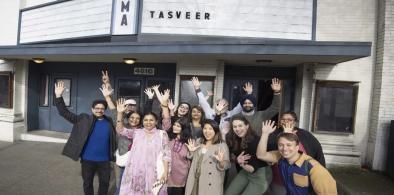
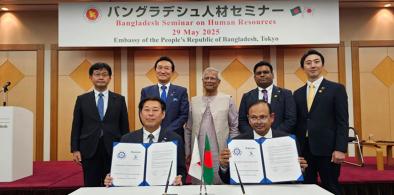
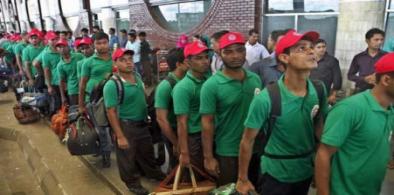

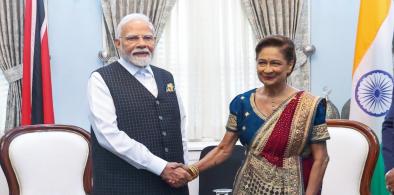
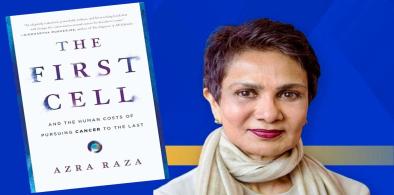
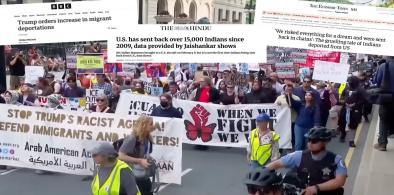








Post a Comment